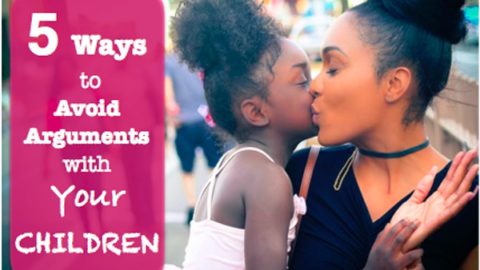In order to understand the communication and miscommunication between you and your kids we need to first look closely at the general rules of communication. In every communication between two or more people the following characteristics determine the message:
- Content,
- Process,
- Verbal communication,
- Non-verbal communication.
Two Levels of Interaction
Interactions between people exist on two levels:
- CONTENT LEVEL refers to the words we speak when we communicate and the topic of the discussion.
- PROCESS LEVEL refers to the purpose of the communication and the feelings communicated. The “process level” refers to the meaning, intent, and feelings of everyone involved rather than the specific words spoken.
Two Types of Communication
There are two main types of communication:
- VERBAL COMMUNICATION refers to the words we speak and occurs on the content level.
- NON-VERBAL COMMUNICATION refers to the messages and feelings we communicate and occurs at the process level.
When inconsistency exists between the words we speak and what we are feeling we give our children a mixed message.
For instance, when we are angry at our kids and try to cover up our anger by telling our kids, “No, I’m not upset/angry,” we are giving our kids a mixed message.
They can “feel” our frustration and anger, yet we are telling them we are not upset. The effects of “mixed messages” in children can be two-fold.
- Our children can be confused because they do not get a consistent message from us about their behavior and how it affects us. We say we’re not angry yet they can feel us “boiling” inside and our faces and our body language reflect frustration and/or anger. Children certainly perceive the way we stand, our expressions, how we hold our hands, etc.
- Children can experience a powerful sense of control over the situation and over us. When our response does not match the unspoken feelings we are radiating (anger, frustration, sadness, etc.) we are actually sending a mixed message that communicates that we are not in control of the situation. When this happens, children either feel uncomfortable and/or feel like they are in control.
Remember that communication is only 7 percent verbal and 93 percent non-verbal. The non-verbal component includes our body language (55 percent) and tone of voice (38 percent).
Why Consistency Matters
Understanding all of this is actually a parenting communication skill that empowers you to improve parent-child communication problems and achieve more positive solutions for everyone involved.
It is important for children to know that the adult is “in charge” of both himself and the situation even if the only thing the adult can honestly say is, “This is an upsetting situation and we both need some time to settle down. I am not okay with what happened, but I have not decided what I am going to do. Let’s think it over and then decide after we talk later. I will let you know what the outcomes will be.”
There is a strong connection between the results of conflicts and misunderstandings and the very distinct ways of communicating and miscommunicating mentioned above. When an interaction between you and your children includes strong emotion, unclear communication, and power struggles, the end result is usually increased tension, increased testing behavior by the child, and increased aggravation for everyone.
Children whose parents react strongly soon learn that at the very least they are able to control their parents’ emotions. I’m sure you have experienced when parents give mixed messages OR have emotional outbursts. What resulted? Typically we see displays of repeated arguing and continued behavior challenges from the child followed by increased frustration for everyone involved. If you’ve been through this in the past I’m sure you know exactly what I’m talking about!
When handled by a calm adult who communicates with calm and clear responses, these situations end up with much more effective results.
Mixed Messages to Avoid
Below is a list of common mixed messages parents send to their children:
- I’m not angry.
- Your behavior does not upset me.
- As the parent, I am in total control.
- I understand what you’re doing and why you’re doing it.
- I know exactly how to handle this.
Each one of these is dishonest and results in continued and/or repeated conflicts and testing behaviors on the part of the child.
The rules of effective parent communication include a balance between what a parent says, how a parent says it, and how the parent is actually feeling.
REMEMBER THAT: Healthy parenting = clear, calm, consistent communication, and honesty when dealing with your child.
You can do it! It takes practice, practice, practice until these new behaviors become part of your parenting treasure chest. Remember to be patient with yourself.













